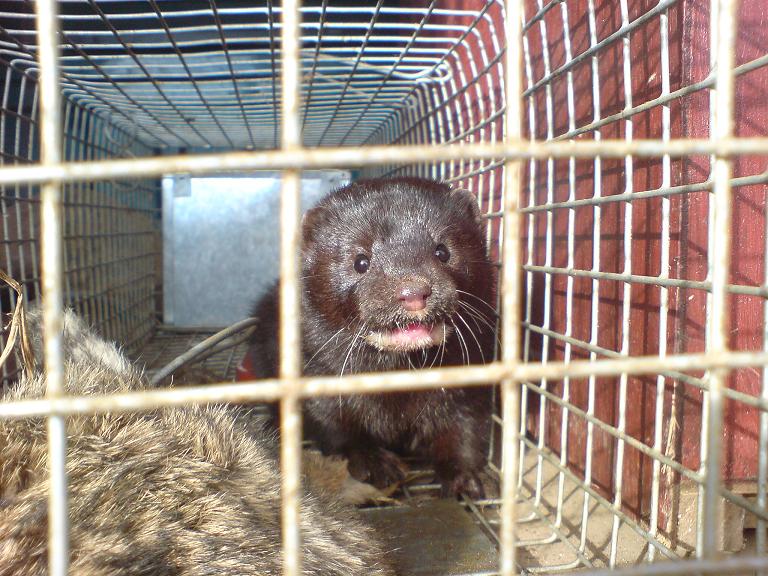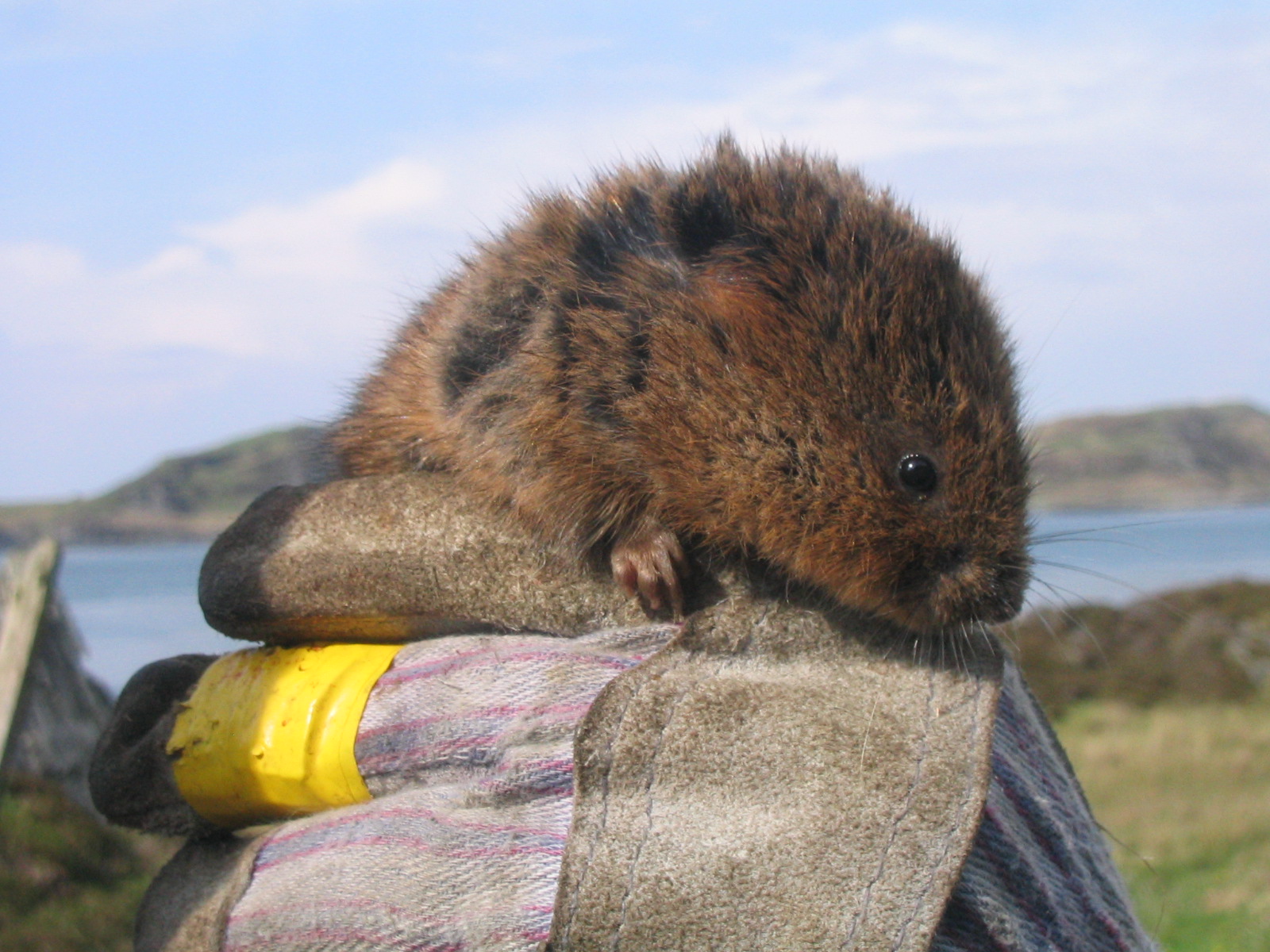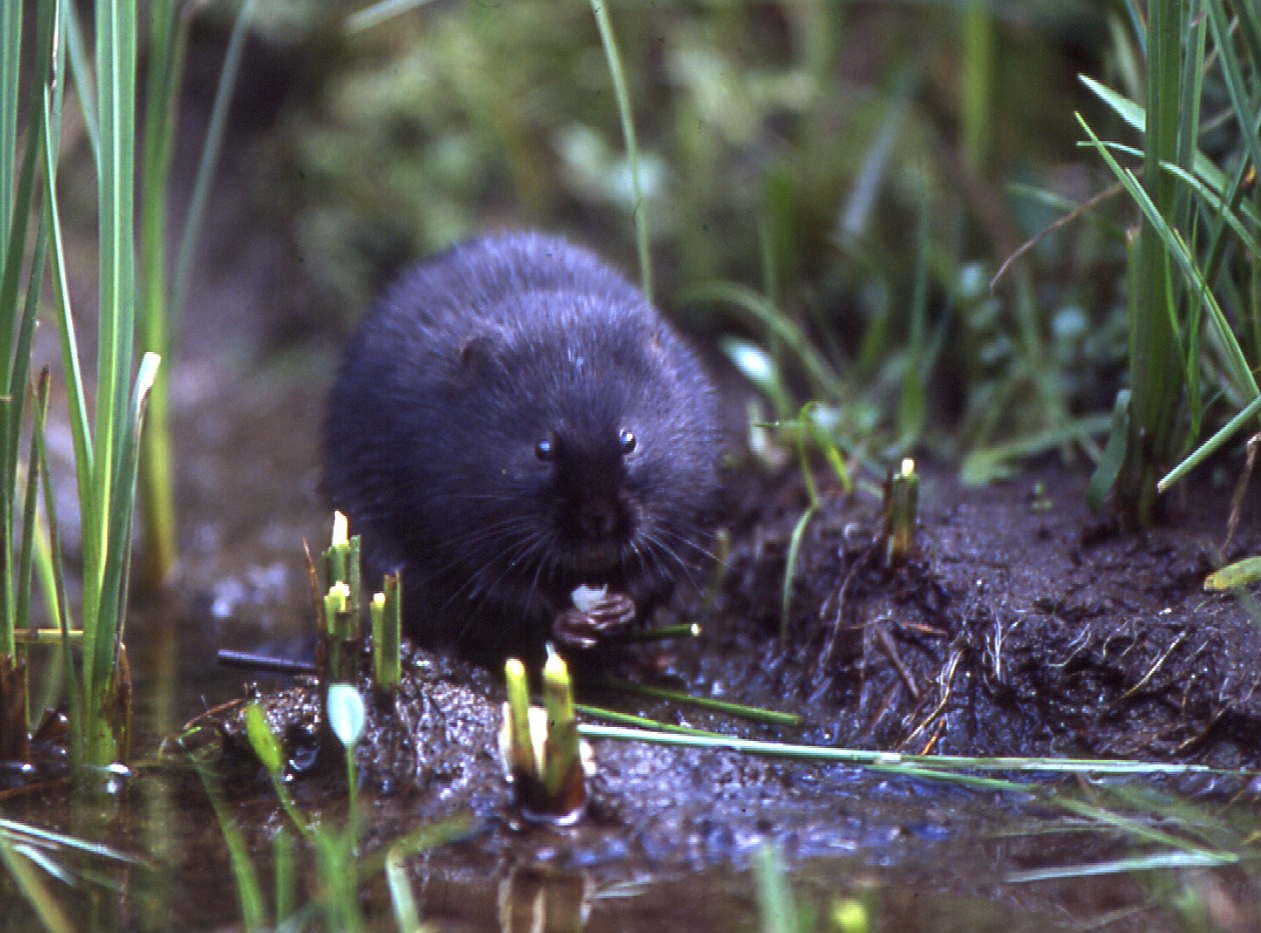| Water Vole Conservation Project and Mink Control Project
The water vole is a semi aquatic native rodent that occupies riparian habitats. Water voles are rodents and are similar in size to rats but have a blunter nose, smaller ears and a shorter furry tail with their body colour either brown or black (They are often mistaken for rats). Colonies of water voles create extensive burrow systems in the banks of water courses which provide shelter and protection from predators. They are herbivorous and feed on a variety of grasses, sedges, rushes and herbaceous species. During the winter they eat plant roots and food stored belowground. They live on average for two years, often dispersing long distances between colonies in search of mates. Each year they can have up to four litters depending on the conditions and with each litter containing possibly eight young, a single breeding pair can be very prolific.
|

"You looking at me"---Picture by Stuart Anderson
So what is the problem you may think?
|
|

"could I eat this?"--
Photograph by Jamie Urquhart
. Mink are semi aquatic and excellent generalist predators and they spell disaster for water voles due to their ability to swim and water voles being relatively easy prey too catch. Mink will also prey on a variety of other species such as rabbits, salmonids, small mammals, frogs, wild fowl, game and song birds.
|
Well the water vole is currently the most endangered mammal in Britain, having declined by and alarming 95% in the past half century. There are several factors contributing to this decline such as habitat fragmentation and degradation but also the most pertinent issue for the NE is predation by the alien invasive predator American Mink.Mink have established wild populations in the North East since the late 70’s and possibly earlier due to escapees from mink fur farms such as the old site at Invercrynoch above Maryculter
|
|
We are very fortunate to still have a few refuges’ where water voles have held on; in upland areas where mink do not frequent as often and gamekeepers control their numbers, also in dense lowland agricultural areas where there are highly branched drainage systems and water voles are less likely to be encountered by mink.
How can you help?
The aim of the North East Water Vole Conservation Project is to protect vulnerable populations of native water voles and a range of other native species by removing an invasive predator, the American mink. We do this by using mink monitoring rafts which enable us to pinpoint mink territories and then trap them with the minimum of time and effort involved.
|

Photo by Alan Ross
|
The monitoring rafts are floating devices teathered to the bankside and have a clay tracking cartridge with a tunnel over it in the center of the raft. Animals climb on to the raft from the water and leave footprints on the cartridge when they cross it. The rafts are then checked fortnightly, prints are recorded and the clay is smoothed down for the next check. If mink prints are identified then a live catch cage trap can be set and any mink can then be dispatched humanley. If any non target species are caught they can be released unharmed.
We know that successful and sustainable mink control in the North East depends on cooperation and participation in local communities. By creating a network of volunteers across all the watercourses in the NE we can remove mink using the rafts from these areas and allow neighbouring water voles to recolonise their existing habitat.
Willing volunteers are also needed to assist with checking areas for signs of mink presence using mink rafts across Donside with rafts on the main river and its many tributraties.
If you would like to help the plight of the water vole, would simply like to know more about the project or report any sightings please contact the
NE Water Vole Conservation Officer,
Jamie Urquhart on [email protected] or 0786 0846 999
In Cairngorm National Park area Llinos Davies on 01479 870 570
or [email protected]
Please have a look at the website for more details http://www.watervolescotland.org
|